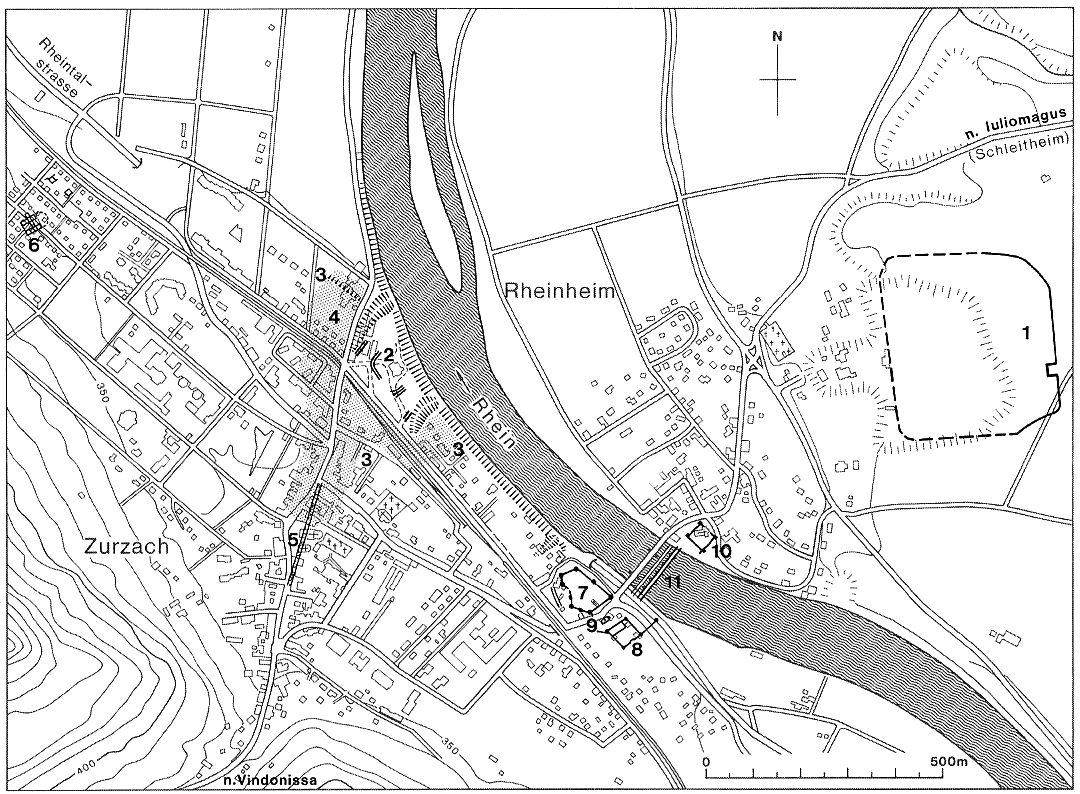Introduction
Early fortresses and vicus
Late fortresses
Bridges
ChurchBad Zurzach is located on the Rhine, in the north-east part of the canton. In the early first century fortresses and a settlement were built here, and in late antiquity two fortresses near a bridge across the Rhine. The ancient name of the place is recorded on the Tabula Peutingeriana as Tenedone. The first discoveries were made already in the 16th century. Throughout the 20th century excavations took place. The objects from the excavations were taken to the Bezirksmuseum in Bad Zurzach.
The Schwertgasse in Bad Zurzach. Photo: Wikimedia, Monika Ernst.

Bad Zurzach and environs. Drack-Fellmann 1988, Abb. 531.
1: camp Dangstetten, 15-10 BC; 2: early fortresses; 3: vicus; 4: baths; 5: tombs along a road; 6: villa Bad Zurzach-Brüggliwiesen-Entwiesen;
7: late-antique fortress Kirchlibuck; 8: late-antique fortress Sidelen; 9: baths; 10: late-antique bridgehead in Rheinheim (Germany); 11: late-antique bridges.
Introduction
Early fortresses and vicus
Late fortresses
Bridges
Church
Literature
Keller 1860, 302-311; Heierli 1907(2); Heierli 1907(3); Stähelin 1931, 572; Hüsser 1940; Laur-Belart 1955; Drack 1961; Laur-Belart 1961; Wiedemer-Doppler 1967; Degen 1970; Gerster 1970; Gerster 1972; Hartmann 1980(3); Sennhauser 1980; Frei-Stolba - Lieb 1981; Hartmann-Weber 1985, 214-218; Hänggi 1986; Hartmann 1987; Drack-Fellmann 1988, 574-578; Hidber - Roth-Rubi 1990; Drack-Fellmann 1991, 305-309; Speidel 1993; Hänggi - Doswald - Roth-Rubi 1994; Brem 1995; Pedrucci 1995; Riethmann-Seifert 1996; Frei-Stolba - Lieb 2002; Grafinger 2007.
[6-Oct-2023]